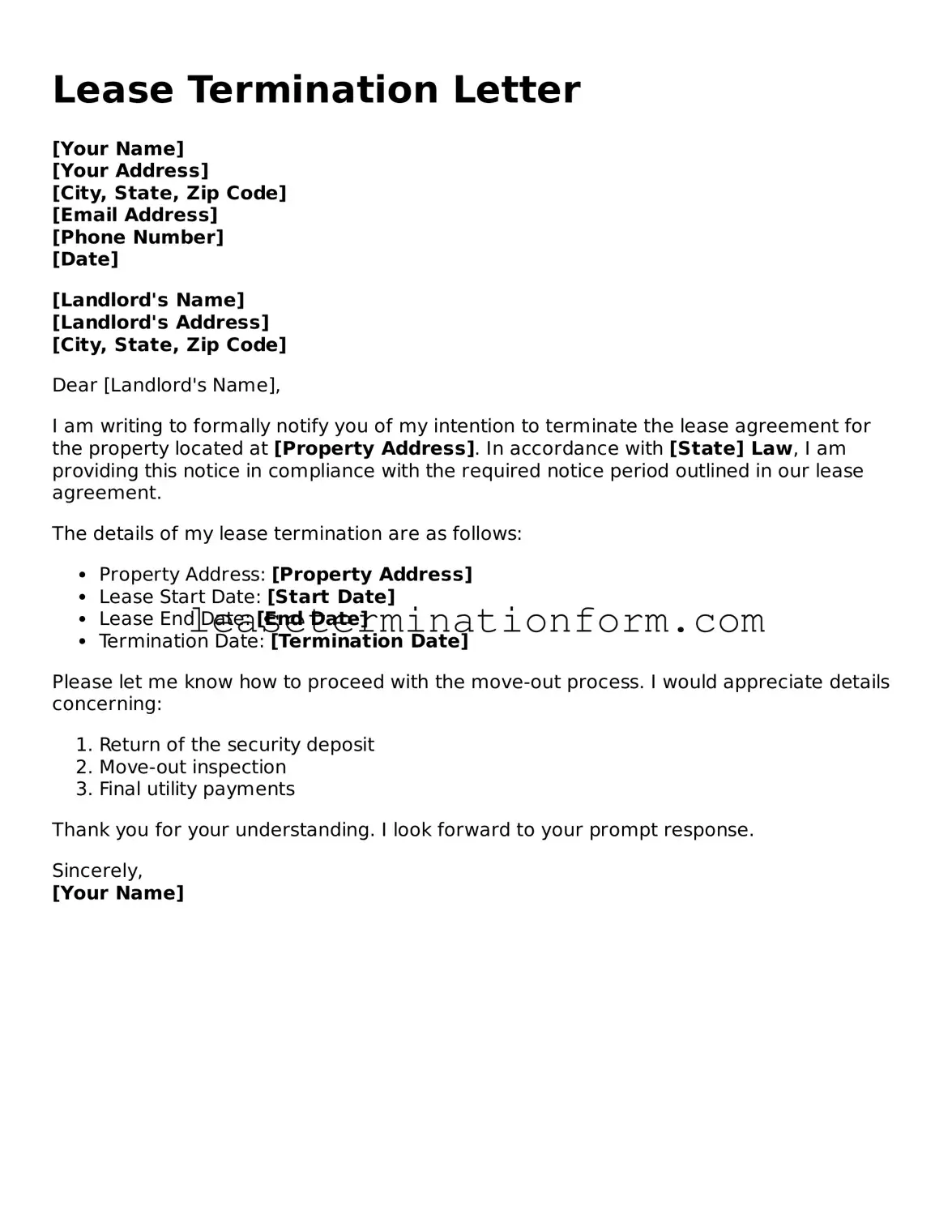Documents used along the form
When ending a lease agreement, several documents can complement the Lease Termination Letter. Each of these forms serves a specific purpose and helps ensure a smooth transition for both the tenant and the landlord. Below is a list of commonly used forms that may accompany a Lease Termination Letter.
- Move-Out Checklist: This document outlines the steps a tenant should take before vacating the property. It helps ensure that the unit is left in good condition and that all obligations are fulfilled.
- Final Inspection Form: This form is used to document the condition of the rental unit during the final walkthrough. Both the landlord and tenant can sign it to agree on any damages or necessary repairs.
- Security Deposit Return Form: This form is essential for requesting the return of the security deposit. It details the amount being requested and any deductions for damages, if applicable.
- Notice to Vacate: Often required by landlords, this document formally notifies the landlord of the tenant's intent to leave. It typically includes the move-out date and may be a prerequisite for the Lease Termination Letter.
- Lease Agreement Copy: Keeping a copy of the original lease is important for reference. It outlines the terms and conditions agreed upon, which can be helpful during the termination process.
- Utility Transfer Form: This form is used to transfer utility services from the tenant's name to the landlord or a new tenant. It ensures that services are uninterrupted during the transition.
- Forwarding Address Form: This document allows tenants to provide their new address for future correspondence, including the return of the security deposit and any final bills.
- Rental History Request: A tenant may wish to request a rental history from the landlord to assist with future housing applications. This form can help verify their rental track record.
Utilizing these forms can help streamline the lease termination process, ensuring that all parties are on the same page and that necessary steps are taken. Proper documentation is key to avoiding misunderstandings and ensuring a smooth transition.
